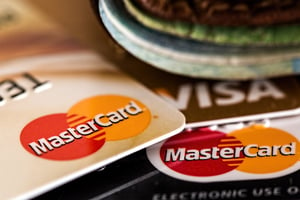 Many of our clients find themselves filing for Chapter 7 bankruptcy because they are out of options. And while bankruptcy is supposed to give you a fresh start, we understand that it often feels more like a defeat. Many clients worry if they will ever be able to qualify for a loan after their bankruptcy case. While you may have to pay a higher interest rate and meet other requirements, the good news is that getting financing after your Chapter 7 bankruptcy is easier than you might think. An experienced Minnesota bankruptcy attorney can help you develop a plan and identify your options.
Many of our clients find themselves filing for Chapter 7 bankruptcy because they are out of options. And while bankruptcy is supposed to give you a fresh start, we understand that it often feels more like a defeat. Many clients worry if they will ever be able to qualify for a loan after their bankruptcy case. While you may have to pay a higher interest rate and meet other requirements, the good news is that getting financing after your Chapter 7 bankruptcy is easier than you might think. An experienced Minnesota bankruptcy attorney can help you develop a plan and identify your options.
Purchasing a Home
Many people who file for bankruptcy think that they will never be able to qualify for a mortgage. While it may seem that way, the average period of time you will have to wait is two years from the date of your Chapter 7 discharge. Two years may seem like a long time to wait, but it will pass faster than you think. You should use that period of time to rebuild and repair your credit.
Keep in mind that your discharge date is not the same as the date that you filed for bankruptcy. This distinction is especially relevant if you converted to Chapter 7 from Chapter 13 or your Chapter 7 case was delayed for some reason because it could mean a difference of several months. You received your discharge right before your case was closed. If you plan to apply for a mortgage soon, you want to locate a copy of your discharge order. Your bankruptcy attorney can provide you with another copy if you are unable to find it.
There are a variety of mortgage products on the market that you may be able to qualify once you’ve re-established your credit and met the other requirements. A Minnesota bankruptcy attorney can help you map out a post-bankruptcy plan for rebuilding your credit and make recommendations as to which mortgage you may want to consider.
Conventional Mortgage Loans
Conventional mortgage loans tend to have higher requirements in terms of credit score and down payment in order to qualify. In addition, they will probably require you to pay for private mortgage insurance each month unless you can make a down payment of 20% of the total mortgage amount. It’s not impossible to qualify for a conventional loan, but it will require discipline and careful planning.
FHA Loans
An FHA loan is a mortgage that is insured by the federal government. They offer less stringent requirements in terms of down payments and credit scores. However, they do tend to carry higher interest rates. With a credit rating of 640 or higher, you can qualify for a loan with a downpayment of 3.5% of the total mortgage amount. If your credit score is 580 or lower, you will have to pay a higher interest rate. If you have a credit score if 500, you can qualify if you make a downpayment of 10%.
USDA Loans
The Department of Agriculture offers mortgages to low- and middle-income buyers who are willing to purchase a home in a rural area. A USDA loan can be quite attractive as it requires no down payment and has a low interest rate. However, you will have to wait for three years after your discharge before you can apply unless you can demonstrate that your bankruptcy filing was prompted by circumstances beyond your control.
VA Loans
This is another federal mortgage product, this time offered by the Department of Veteran’s Affairs for those who have served in our military. If you are a veteran, these loans can be especially attractive as they require no down payment or minimum credit score. They will require you to maintain good credit for two years after your discharge before you can apply.
VA loans carry an important detail, however: if you have previously taken out a VA loan on a property that was lost to foreclosure, you will be required to pay back the remaining balance due on the prior mortgage.
Purchasing a Car
Many people may need to purchase a new car before they need to buy a new home. If you’ve filed for Chapter 7 bankruptcy, the best course of action is to wait until you’ve received your discharge before buying a new car. Once you have been discharged, you may want to wait a few months to rebuild your credit so that you can qualify for the best possible interest rate.
The first step is to find a reputable lender. There are a lot of questionable and even abusive practices in the car loan industry that specifically target people who have been through bankruptcy or otherwise have poor credit. There is a good chance that you may have to take a loan from a sub-prime lender (also referred to as “bad credit lenders”), but you want to make sure that you are dealing with a legitimate and reputable lender. A Minnesota bankruptcy attorney can probably provide you with a list of lenders that they have vetted if you need a recommendation.
Once you’ve found a lender that you are comfortable with, you can apply for the loan. Again, you will probably need to provide a copy of your discharge papers in order to prove that you have completed the bankruptcy process. They will check your credit, so you want to make sure ahead of time that it doesn’t contain any inaccurate information. Credit reports are difficult to read, but a Minnesota bankruptcy attorney can review it with you to make sure that it contains only accurate, current information so that you can qualify for the best possible loan.
A Minnesota Bankruptcy Law Firm Helping People Build a Better Future
At Kain & Scott, we believe that our obligation to our clients doesn’t end on the day you receive your discharge. We will help you get through the bankruptcy process, but we also provide guidance in building your post-bankruptcy future. From repairing your credit to getting a loan, we help our clients make the most of their new beginning. If you would like to talk with one of our Minnesota bankruptcy attorneys about your situation, call us at 800-551-3292 or contact us online in order to schedule a free consultation.


